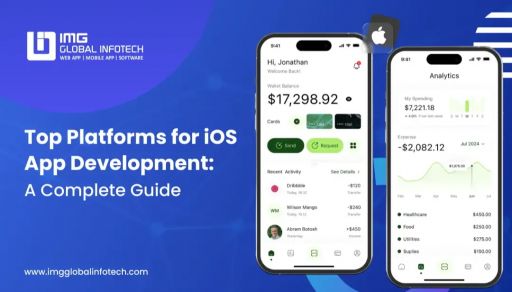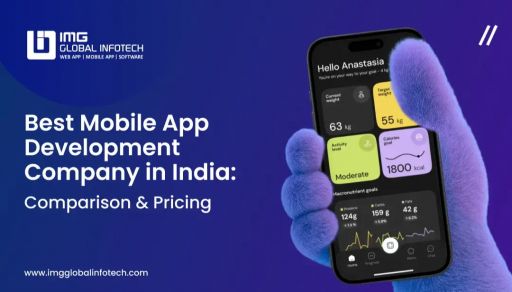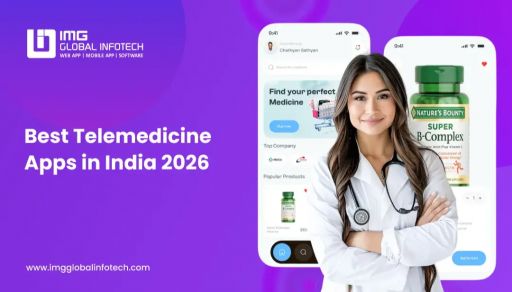Top 10 Best Cross-Platform App Development Frameworks In 2025
Mohit Mittal
Apr 15, 2024

Cross-platform app development is attracting a massive amount of developers and companies due to its benefits. As the popularity of cross-platform application development grew, many frameworks and cross-platform tools began to appear on the market. Slowly, then quickly, all the while, every other mobile application development company was trying its hand at this unique technology.
As a developer, this can make it challenging to choose from various tools and frameworks. This list contains the top cross-platform mobile application development frameworks for product design.
Before we jump to the main points and discover which framework can be used to develop cross-platform applications, learn what a cross-platform app development is.
What is a Cross-Platform App Development Framework?
Cross-platform software can run on multiple platforms, such as Android, iOS, and Windows. Cross-platform apps do not need to be written for each platform. Instead, the cross-platform application framework will allow the app to work on all platforms. This is the most widely used method in app development today. It is the foundation for almost all top mobile app developers.
What are the Popular Frameworks for Developing Cross-Platform Mobile Apps?
1. Ionic

Ionic is based on AngularJS and is one of the best cross-platform app frameworks. It allows developers to combine top programming languages, i.e., HTML5, JavaScript, and CSS, with the Cordova wrapper to access native controllers.
Ionic apps are interactive and native-like. This makes Ionic an ideal candidate for PWA development.
Features
- It is an open-source front-end framework that enables changes in coding structure. It is a strong competitor to Ionic in the battle for Ionic and React Native.
- Ionic was built using a SAAS UI framework created for mobile operating systems.
- It contains many UI components that are useful in building solid applications.
- This allows you to extend HTML's syntax and core functionality and embed functional but attractive characteristics and elements in your app.
- Ionic is a widely accepted choice among developers because it provides a traditional application appearance. It allows developers to develop cross-platform mobile apps that run on different platforms.
2. React Native

React Native is a cross-platform framework that can use to create apps. React Native, a JavaScript-based framework, allows developers to create actual code and give mobile apps a native feel. It works on both Android and iOS. It is a popular choice for developers, but also businesses trust Native as the right platform to build their apps.
React Native combines the best of JavaScript, React.JS, and React. JS. It also allows developers to create modules in Objective-C or Swift languages. The developers can perform demanding tasks like editing images and videos using this platform.
Features
- Cross-platform development has the advantage of requiring one-time programming (WORA) to develop apps for multiple platforms, such as Android and iOS. This eliminates the problem of other frameworks requiring developers to code twice for the same app on different platforms.
- One-time coding reduces development time and keeps the React Native app development costs low.
- React Native is easily integrated with third-party applications like Google maps.
3. Flutter

It is a cross-platform mobile app development framework that Goggle Company launched in 2017. It's a software development tool that helps in fast iOS and Android app development. It is the leading and basic approach to building Google Fuschia applications.
Flutter allows apps to run quickly on multiple platforms with uniformity and dynamicity. These are just a few fantastic features that make Flutter the best cross-platform mobile app development framework for developers.
Features
- Flutter advocates a portable GPU that renders UI power and allows it to work with the most recent interfaces.
- Flutter doesn't require you to manually update the UI content, as it has a reactive framework. Flutter app developers only need to update variables. UI changes will then be visible.
- The Flutter cross-platform application framework is a widely accepted choice of developers for building Minimum Viable Products ( ). It initiates a speedy development process and is cost-efficient.
- Developers can easily and swiftly build a widget tree from the beginning.
- Flutter comes with an integrated graphics engine. These features mean developers can create all interfaces for iOS and Android.
4. Xamarin
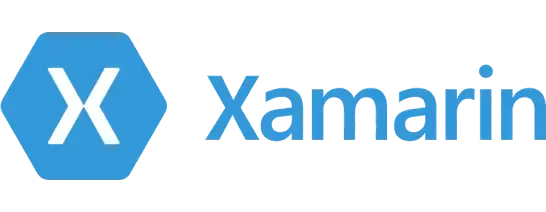
The Xamarin cross-platform app development frameworks are different from the ones previously mentioned. This framework is simplified and can be used for developing apps for Android, Windows, and iOS. Developers can use 90% of the code to create apps for three platforms. Xamarin allows you to build apps that look like native apps using its amazing APIs. It is difficult to choose between Xamarin and React Native.
Features
- Apps built with the Xamarin framework employ C# - a modern, cross-platform development language with advantages over Objective-C and Java.
- Xamarin gives developers native-level app functionality. It helps to reduce hardware compatibility issues by using plugins and specific APIs that work with standard device functionality. This feature alone makes it the best Android app-development framework.
- Xamarin allows the direct inclusion of Objective C, Java, and C++ libraries. This will enable developers to reuse multiple third-party codebases encrypted in Java, Objective C, or C++. This is one of the most popular cross-platform options for mobile app development.
- Xamarin helps to reduce the time and costs of mobile app development. It supports WORA (Write Once, Run Anywhere) and a considerable collection of class libraries.
- Xamarin provides total compile time checking. This feature allows developers to detect fewer errors during runtime and create well-functioning applications.
- Xamarin provides a beautiful native user interface that developers can use to create native-like applications.
5. Native Script

Native Script is a cross-platform, free framework built on JavaScript. It is not wrong to state that Native Script has been a preferred choice for developers seeking WORA functionality. Native Script offers all native APIs.
Features
- NativeScript creates beautiful, intuitive, platform-native UI without WebViews. The UI can be customized for specific screens or devices.
- NativeScript is a web resource that developers can access to help them develop all kinds of solutions. This eliminates the need for third-party solutions.
- It uses TypeScript to program.
- NativeScript supports segments like AndroidArsenal and Cocoapods and calls libraries to implement local strategies.
6. Node.js

Node.js is a robust framework for developing cross-platform apps. Node.Js is a JavaScript runtime framework based on the Chrome V8 JavaScript platform. It's an open-source platform that allows you to create server-side and scalable networking apps. Cross-platform Node.js apps are highly responsive and efficient.
It can handle multiple concurrent connections simultaneously. The framework also includes a rich library with JavaScript modules to simplify the development and maintenance of web applications.
Features
- Node.js APIs all are asynchronous. This means they are not blocking, and servers based on Node.JS don't need to wait for API data. After calling an API, it immediately switches to another API. The server can get a response from an API call by using a notification mechanism for Node.js.
- Node.js library executes code at an impressive speed because it uses Chrome's V8 engine.
- Node.js cross-platform apps don't buffer; instead, they output data in chunks.
- Node.js employs a single-threaded model with event looping functionality to deliver flawlessly functioning applications. This event mechanism allows the server to respond in a non-blocking manner, making them saleable.
- Node.JS applications reduce the time it takes to respond to slow requests, and each developer can perform all information queries at once.
7. Appcelerator Titanium

Appcelerator helps you develop mobile apps faster and more efficiently. This tool allows you to create cross-platform apps using a single code base. The primary goal of this project is to streamline the app development process using native components found in JavaScript code.
Features
- Appcelerator provides many tools to speed up application development. This means a prototype can be quickly built to allow users to interact with the UI.
- It includes ArrowDB- a schema less data store that allows developers and administrators to deploy data models without additional setup quickly.
- It allows the integration of existing continuous delivery systems such as SCM solutions and others.
- Appcelerator has pre-built connectors for MS Azure, MS SQL, and Salesforce.
8. PhoneGap

Phone Gap (Cordova), a cross-mobile platform development framework, uses HTML5, JavaScript, and CSS. Developers can also use the cloud solution provided by Phone Gap (Cordova) to share their apps during development to get feedback from others.
It creates excellent apps using existing web technologies. Phone Gap’s other great feature is its support for in-built features like GPS, Cameras, phonebooks, and Storage.
Features
- PhoneGap is a great cross-platform framework because it allows developers to create cross-platform apps using existing web technologies like HTML 5, CSS3, or JavaScript.
- PhoneGap is a multi-platform mobile development framework that allows you to create apps for multiple platforms, such as iOS, Android, and Windows Phone.
- It is pluggable by nature. This means that access to native APIs for devices can be extended modularly.
9. Sencha Touch

Sencha Touch was introduced almost a decade ago. Developers used in building cross-platform web app development apps. Sencha Touch will enable developers to create secure, well-tested UI components and libraries.
It is possible to create significant business apps and then maintain them efficiently and effectively. It has some remarkable features like:
Features
- It is well-known for its native-looking themes that are compatible with all major platforms, including Android, iOS, BlackBerry, and Windows Phone.
- It includes an efficient agnostic data package that can work with different data sources.
- Sencha Touch's most notable feature is its support for Cordova integration, allowing native API access and packaging.
- It allows code compatibility between old and new codes.
- You get 50+ pre-built UI widgets and customizable options. Rich UI, such as lists, carousels, and forms, are also available.
10. Corona SDK
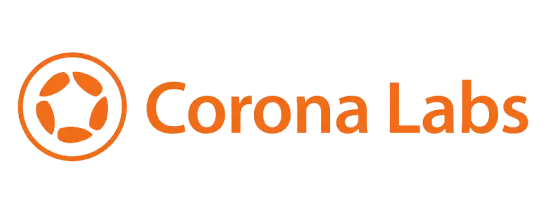
Corona SDK allows programmers to create 2D mobile apps for all major platforms, including Kindle or Windows. It allows for 10X faster development of mobile and gaming apps. Its backend framework, which relies on Lua, a lightweight multi-paradigm programming language, delivers impressive results. The language is focused on the critical elements of development, which include speed, portability, and extensibility. It is also free and works on both Mac OS X and Windows. Real-time testing is supported.
Features
- There are over 1000 APIs available that allow developers to create sprite animations and audio.
- It reacts almost immediately to code changes and gives a real-time preview as it would on real devices.
- It supports nearly 200 plugins, including in-app analytics, media, and hardware features.
- Corona SDK depends on Lua programming language, which allows it to be fast and powerful.
What are the benefits of cross-platform app development frameworks?
-
Maximum exposure to the target audience
Cross-platform mobile development lets you build and distribute an app across various platforms, including the internet. You can target iOS and Android platforms by building one app which allows for greater reach.
-
Development costs reduced
Cross-platform application development depends on "compose once, run everywhere." The cost of the product can be reduced by using reusable codes and agile app development with tools. Cross-platform apps are a great way to increase your business across multiple platforms and devices.
-
Easier Maintenance & Deployment
It's easier to maintain an application that runs on all platforms. It is easier to update across all platforms and devices quickly, which saves time and money. Report any bug in codebase immediately. These guidelines will help developers save time and money.
-
Quicker Development Process
Cross-platform application creation has another advantage: speed of development. One source code can be used on multiple platforms, which reduces development time by as much as 50% to 80%. This allows you to develop more feature-rich applications quickly. These developers can meet the deadlines of mobile cross-platform development.
-
Code You Can Reuse
You can also reuse the code multiple times with this platform. One code can be reused instead of writing new code for each platform. This saves time and money by not having to write unique codes for every platform.
-
Cloud Integration with the Cloud
Cross-platform mobile apps can be fully compatible with different plugins integrated with the cloud settings. Multiple plugins and extensions can be added to the single source code to enhance its utility and scalability.
Conclusion
Now that you have considered all of the options for cross-platform app developers, it is time to wait and see how these frameworks stack up against each other to stay competitive.
We are the best mobile app development service provider company. Many of our apps have set new standards.
Mohit Mittal is the co-founder of a leading IT company with over a decade of experience in driving digital transformation and innovative tech solutions. With a strong background in software development, Mobile app development, E-commerce, business strategy, and team leadership, Mohit Mittal is passionate about helping businesses scale through technology. When not solving complex tech challenges, he enjoys sharing insights on emerging trends, entrepreneurship, and the future of IT.





